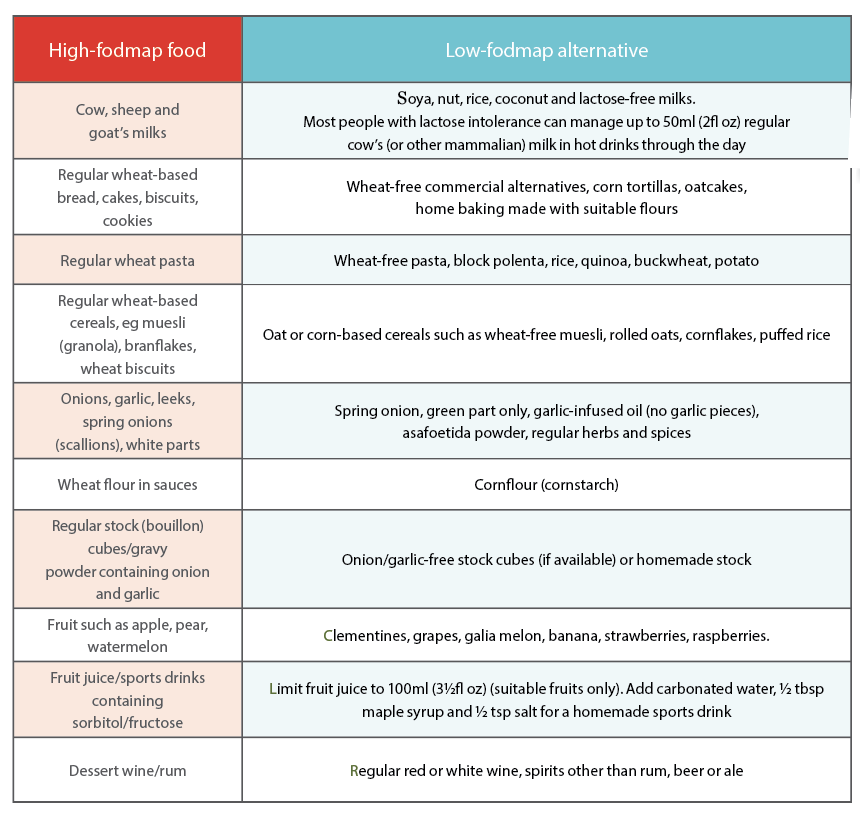Getting your mindset right to begin a low-FODMAP diet may be a daunting prospect, but Penny Doyle provides some top tips to make it accessible to most…
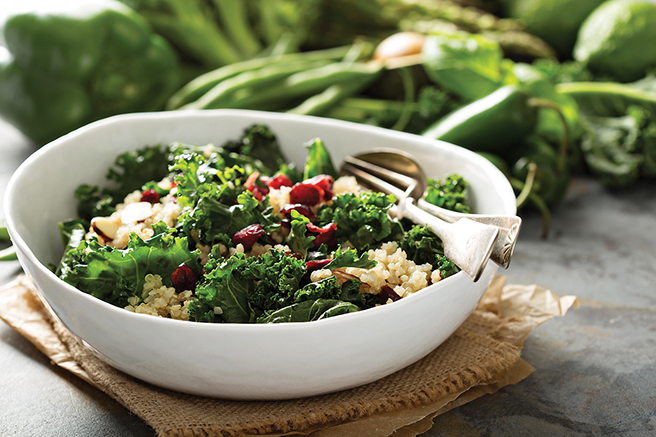
Following a low-FODMAP diet takes some thought, planning and vigilance. The diet involves removing certain carbohydrates (fermentable oligosaccharides, disaccharides, monosaccharides and polyols) to help with your digestion and most commonly IBS.
Making sure that you understand the theory, choosing a suitable time to start, and preparing adequately will all help.
Avoid following the diet at a time when you have social commitments or holidays, as eating out on a low-FODMAP diet can be challenging. Ideally you would follow the diet strictly for the full trial period, as breaking it, even for one meal, makes it difficult to assess its effect.
Access to a FODMAP-trained dietitian is also helpful as he/she will be well versed in any changes to food lists (which are continually evolving), and can tailor advice to your individual medical and personal needs. A dietitian will also help you ‘score’ your symptoms. Comparing these with scores at the end of your trial will help gauge any improvements from the diet. In the majority there are clear improvements after the trial: less pain, firmer stools, and loss of urgency, and the results can be quite life-changing.
If a low-FODMAP diet is right for you, you should see some improvement after 2-4 weeks. If you are not sure of the results, then I would suggest continuing for a further 2-4 weeks. If there is still no improvement, it is likely that the diet isn’t going to help you, and you might have to seek alternative strategies, ideally with the support of a doctor. Hopefully, however, you will see a change, and can go on to a re-introduction phase.
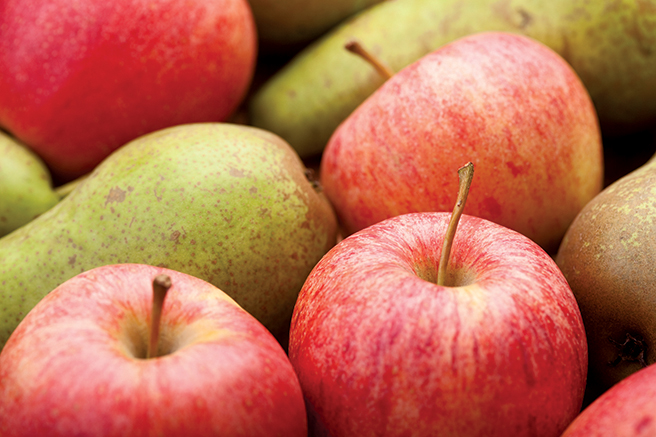
Professionally prepared diet sheets are available, although may only be distributed through dietitians to help protect accuracy and quality. Monash University also has an excellent FODMAP app that suggests suitable foods using a ‘traffic light’ system, and provides recipes with ‘filters’ for FODMAP types. Be wary of online FODMAP advice unless it has an academic origin, as many have created websites with untested food lists, and providing advice of dubious accuracy.
For vegetarians and vegans, omitting beans, pulses, and some vegetables and nuts on a low-FODMAP trial can reduce your intake of essential amino acids (proteins). With careful planning, however, these can be replaced by eating suitable vegetables, nuts, eggs, soya mince (TVP), wheat-free Quorn (TM), and nutritious pulses such as quinoa, buckwheat and wholegrain rice. Professional, tailored advice would be useful, particularly for vegans.
For baking, there are a wide range of wheat-free flours that can be successfully used, and often specially blended commercial blends will produce the best results. Xanthan gum, improves the elasticity, flavour and stability of wheat-free flours that are low in gluten, and is FODMAP-friendly. Guar gum has similar properties. Other useful wheat-free ingredients for baking are ground nuts, polenta and cornflour.
On a low-FODMAP diet, you will need to exclude regular wheat flour and related products.
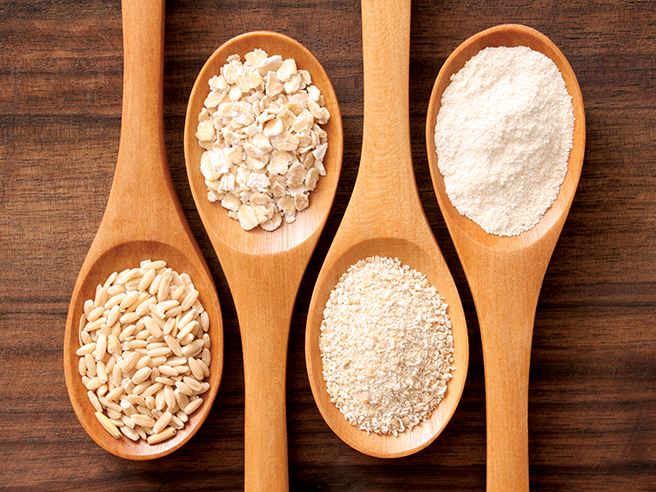
Low FODMAP flours
The range of wheat-free alternatives is increasing, and you can of course buy suitable flours and have creative fun in the kitchen. This table shows alternative suitable flours for using in a low-FODMAP diet, and gives ideas for using them.
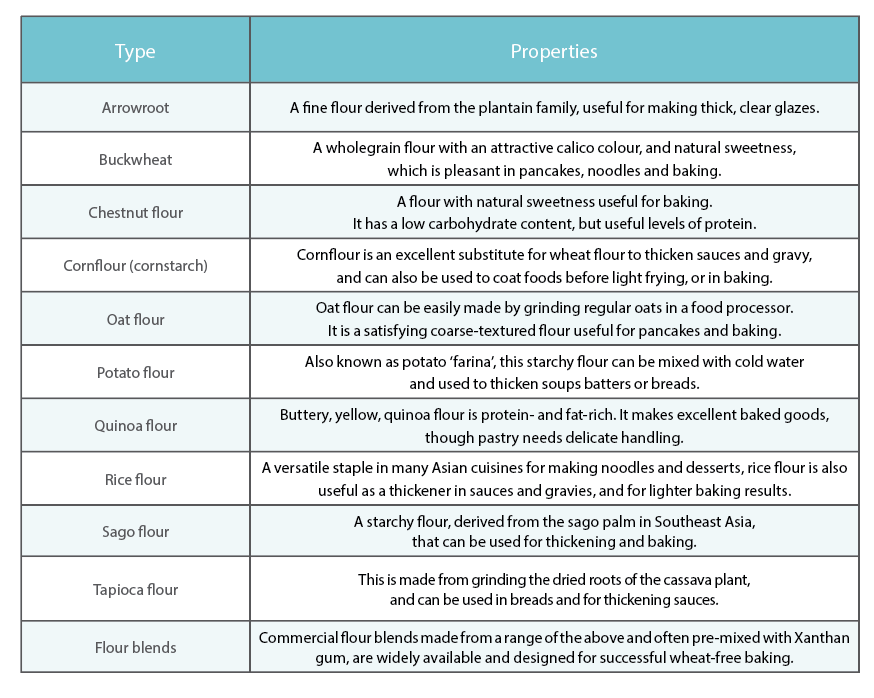
Top tips
Keeping these tips in mind while you are in the elimination stage will increase your success rates.
- Preparation is key. Take a few days to make sure you have suitable foods at home, which will help you stick to the diet. Stock up on everyday staple alternatives before you begin.
- Remember that many everyday foods are suitable; fresh meat, fish, eggs, oils and butters, hard cheeses, potatoes, rice, and a good range of vegetables and salads are all FODMAP-free, and are great for putting together quick meals.
- Caffeine is fine in moderation (2-3 cups daily), and you can include up to 50ml (2fl oz) milk per day in tea or coffee.
- You can include a limited amount of wine, beer and spirits, but not rum or dessert wines.
HGH FODMAP and suitable alternatives
Preparing your store cupboard for a low-FODMAP trial will help you complete it without too much difficulty. This table shows handy alternatives to everyday foods that are excluded on the trial.
